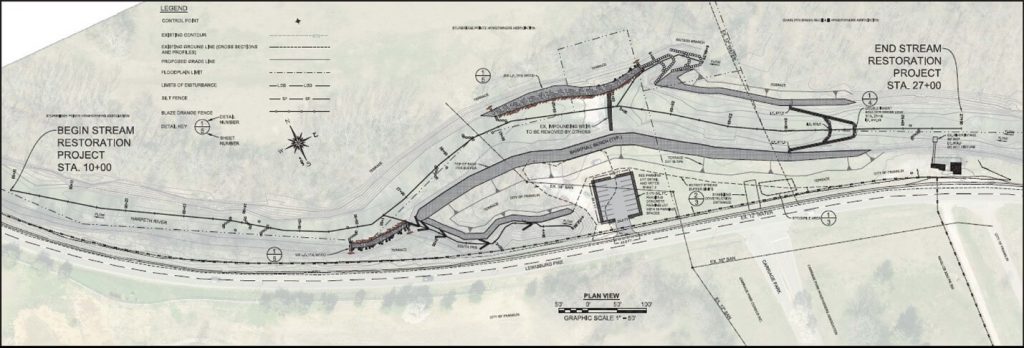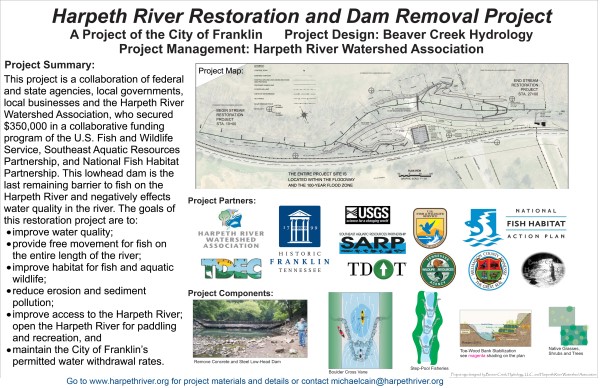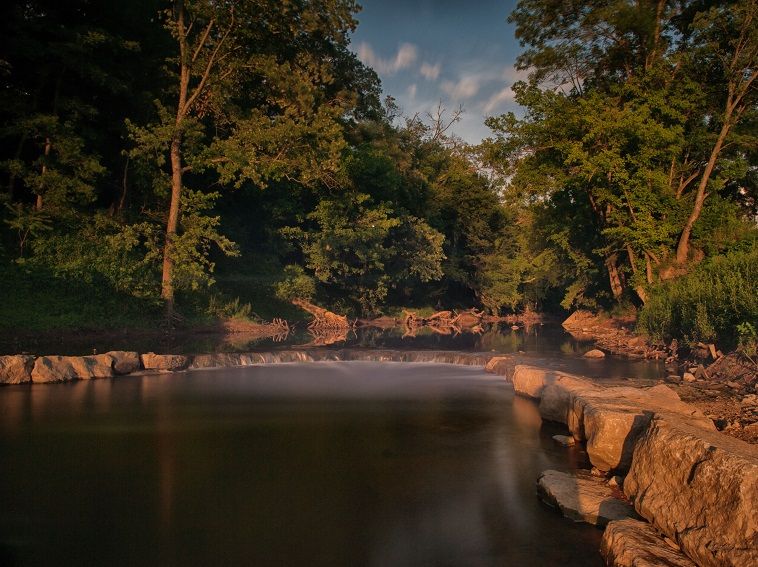Dam Removal
Lowhead Dams
Lowhead dams have been a mainstay in U.S. rivers since the 1800’s. A low head dam is a special type of dam that is less than the height of the river banks and allows water to flow over it if the levels in the river are above normal, which allows the levels to remain constant behind the dam. They were originally implemented to help back water up that could be utilized to help power various types of mills, irrigate farmland, and generate electricity. More efficient technology has replaced these mills, but the low head dams remain.
There are anywhere from 2700 to 4600 of these dams in the United States. While the vast majority are nonfunctional, many people like them for their aesthetics and the smooth waterway they create, which is ideal for recreation. However, there is more to these dams than meets the eye. These dams can create a deadly, recirculating current called a hydraulic. These hydraulics cycle at the base of the dam and if a person or animal is caught in it, escape is almost impossible. In the past 70 years, there have been at least 441 deaths in the United States due to these dams (BYU Researchers). An issue that adds fuel to the fire is that many cities advertise and use the dams as recreational areas, increasing the likelihood that someone will get too close while canoeing or fishing and enter the deadly currents
Lowhead dams also have severe environmental impacts. They cause heavy sedimentation upstream of the dam, which harms many organisms present there. The dams also change the water chemistry of the pool they create, and the water downstream, which can be detrimental to the ecosystem. In addition to this, animal movement is, for the most part, halted, causing biological separation of the communities in the rivers.
These dams are becoming a large part of the environmental debate for good reason. They can create adverse effects on the waterways they are in and harm the animal populations found there. In addition, they are massive hazards to people that are around them due to the deadly hydraulics they create. For these reasons, there has been a spike in low head dam removals around the United States in recent years. In fact, the Harpeth Conservancy has been a part of this fight.

Harpeth River Lowhead Dam Project
We helped spearhead the removal of a lowhead dam on the Harpeth River in Franklin, TN (READ MORE HERE). The dam was constructed in 1950’s (1953) to help supply water for Franklin’s drinking water plant, which was not able to draw water for much of the year due to low-flow conditions. The project was designed by Beaver Creek Hydrology and mimicked conditions found in the river’s natural state, increasing habitat and improving conditions for wildlife. In place of the dam, several cross vanes and a pool were added to provide enhanced habitat for fish to live.
The Harpeth River is home to a wide variety of fish species and a survey by the Tennessee Wildlife Resource Agency (TWRA) found that there were 53 fish species present below the dam in comparison to only 19 in the pool created by the dam. The dam caused low dissolved oxygen throughout the year, which created unfavorable conditions for many organisms in the river. In addition to the low dissolved oxygen, many species were also forced out of the pool created by the dam due to limited habitat that it caused. Removal of the dam helped to restore ecological balance by increasing favorable conditions for many species while also cleaning the water. If you are interested, click here for the full report.

In addition to being environmentally and biologically beneficial, the removal of the dam also increased recreational activities. The public can enjoy the Harpeth River thanks to an additional access point near where the dam once stood! This access is part of the Harpeth River State Park, which allows for public access at many sites along the river.

The graphic below is from final plans which are based on preliminary plans approved by the Steering Committee in May 2011. Click here to see the powerpoint presentation to city of Franklin Board of Mayor and Alderman in May 2010. This has a nice summary of the project with photographs and all the key information on the project including project partners. The only change is that the concept plan has since been updated to the final plan.

Through the lowhead dam removal, the Harpeth River is now one of three free-flowing rivers in the entire state of Tennessee. The project was recognized as the 2013 Governor’s Environmental Stewardship Award for Excellence in Natural Heritage, as well as propelling the Harpeth River to be recognized as part of the President’s America’s great Outdoors Initiative by the Department of Interior. In 2015, fish community surveys were preformed by TWRA biologists who found that, “The physical aspects of the habitat restoration project appear to be very successful. The new habitat was stable and connectivity for fish greatly improved.”


